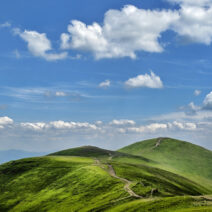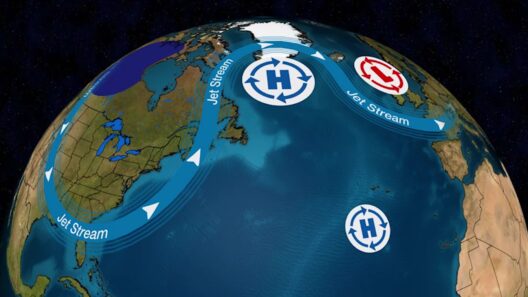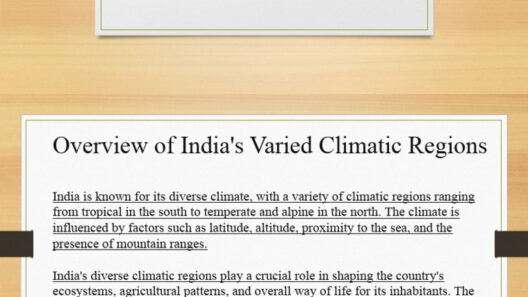The climate of Fiji is a veritable tapestry woven from the threads of tropical heat and oceanic whispers. Nestled in the South Pacific, this archipelago offers more than just postcard-perfect beaches; it reveals a complex interplay of atmospheric phenomena that influences not only its residents but also the wider environmental landscape. Understanding the climate of Fiji means engaging with the dance of its island breezes and the tempestuous nature of tropical storms.
Fiji, comprising over 300 islands, predominantly falls under a tropical maritime climate, characterized by two primary seasons: the warm, humid summer from November to April and the cooler, drier winter from May to October. During the summer months, the islands bask under the sun’s benevolent rays, with temperatures soaring between 25°C to 31°C (77°F to 88°F). Paradoxically, this period also heralds the arrival of the wet season, where rainfall generously spills from the Caribbean blue skies, transforming the landscape into a lush paradise.
The juxtaposition between dazzling sunshine and relentless rain serves as a reminder of nature’s duality. It evokes the imagery of an artist’s palette—brilliant yellows and vivid greens competing, colliding, and ultimately coalescing into a breathtaking masterpiece. The humidity, often exceeding 80%, saturates the air with the essence of the ocean, imbuing every breath with the briny tang of saltwater.
As the winds whistle their age-old tune, the term “trade winds” comes to mind, referring to the steady east-to-west airflow originating from subtropical high-pressure areas. These winds not only bring relief during the sweltering summer but also play a crucial role in shaping Fiji’s climate realities. As they brush against the islands, they help to redistribute moisture, leading to localized rainfall that nurtures the territory’s rich biodiversity. It is this natural symphony that maintains the delicate balance of ecosystems, transforming the land into a sanctuary for myriad flora and fauna.
However, beneath this enchanting surface lies a turbulent undercurrent. The cyclone season, peaking between December and April, presents a darker, more chaotic facet of Fiji’s climate. As the warm waters of the South Pacific reach temperatures conducive to cyclone formation, powerful storms can spiral into existence, wreaking havoc across the islands. Cyclones are the tumultuous tempest, capable of transforming tranquil shores into battlegrounds of destruction.
Each cyclone is a monument to nature’s ferocity—a reminder that what is idyllic can swiftly shift to catastrophic. The scars left by storms are etched in the memories of Fijians; their resilience amidst such adversity showcases the indomitable spirit of communities. Yet, cycles of increasing intensity and frequency signal the growing threat posed by climate change. This is where the metaphor deepens: as these cyclones expand, they mirror the rising challenges of a warming planet, emphasizing the urgent need for sustainable practices and climate action.
The ecological ramifications of Fiji’s climate are immense. Coral reefs, often dubbed the “rainforests of the sea,” flourish under the warm waters, teeming with life and color. These unique underwater ecosystems offer not only breathtaking beauty but also critical resources for local fishing communities and the economy. However, the fickle nature of the climate and the rising sea temperatures, a consequence of global warming, place these reefs under siege. Coral bleaching events, brought about by thermal stress, serve as warnings of the fragility inherent in such vibrant ecosystems.
Yet, despite the threats, Fiji’s climate cultivates a unique appeal. The islands emerge as an ephemeral paradise, where travelers are invited to frolic in azure waters and sway under swaying palms. The local culture, deeply entwined with the rhythms of nature, flourishes in harmony with the surrounding environment. Festivals and rituals celebrate the land’s bounty, reinforcing the vital connection between people and their climate.
Exploring Fiji’s climate offers insights into not only its beauty but also its vulnerabilities. The agricultural sector, which serves as the backbone of the economy, is subject to the capricious nature of rainfall patterns. Farmers must adapt, employing innovative techniques to safeguard their crops against the threats of drought and excessive rainfall. An age-old practice known as agroforestry integrates trees into agricultural systems, enhancing resilience while preserving the ecosystem.
In the face of climate change, Fiji stands at the crossroads of adaptation and mitigation. Emerging as a formidable advocate on global platforms, the nation exemplifies the urgency of climate action in small island developing states. By committing to sustainable development and promoting renewable energy solutions, Fiji not only protects its own future but also serves as a beacon of hope for those affected by climate change worldwide.
Ultimately, the climate of Fiji is a living narrative, rich with dualities that evoke a profound sense of wonder. The island breezes whisper tales of tranquil beauty while the storms tell stories of resilience and adaptation. As the global community grapples with the realities of climate change, Fiji’s unique tapestry serves as both a reminder of what is at stake and an illustration of the paths we might forge in pursuit of a sustainable future.







